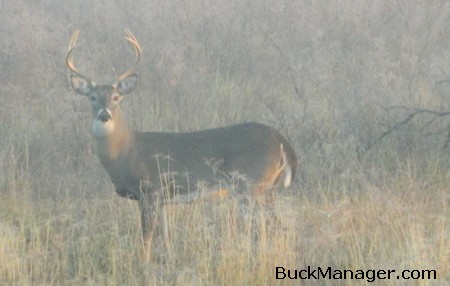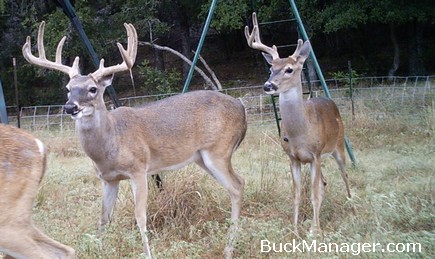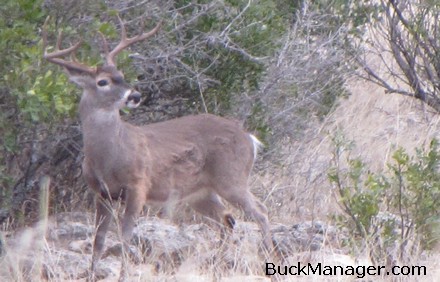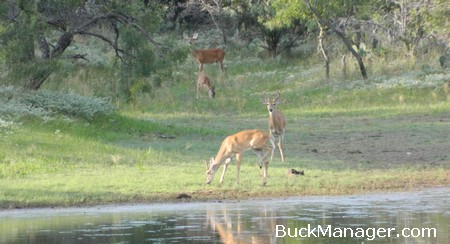The life of a white-tailed deer is highly impacted by the weather. Hunters know that high rainfall years are better than dry ones when it comes to antler growth and the number of fawns produced. Mild weather during the spring and fall is also conducive for plant growth, which in turn is good for deer growth. Everything struggles when it gets really hot or really cold. However, if you’re looking to harvest a deer this season then colder temperatures are exactly what you need. And that’s because whitetail deer move around a heck of a lot more when temperatures drop.
I know what you’re thinking. The rut, right? Cooler temperatures must mean that bucks will be chasing does with reckless abandon. Well, that could be one exciting scenario, but I’m targeting the fact that when the temperatures outside get really, really cold, deer get extremely hungry. This means that they have got to eat something, and soon. It takes a lot of energy to maintain a 104 degree (F) internal body temperature when the mercury starts to plummet. Deer will be looking for fuel, but will you be there?

Deer Hunting Good on Cold, Wet Days
Cold weather is good for getting whitetail deer up and moving. Cold, wet weather is even better! Think of it in terms of a hypothetical “deer misery index.” The more miserable it is out there on the landscape then the tougher it is for deer. It makes it very hard for whitetail (and other animals) to bed up and hold tight all day when their energy needs are spiking through the roof. If your heater is running all day at home then you can bet the caloric needs of a whitetail deer are humming right along.
The one caveat to hunting cold, wet and just plain ole nasty weather is that it’s also going to be tough on the hunter, too. These are the days that separate the men from the boys, those that talk the talk from those that walk the walk. If you want to fill the freezer and the wall then it’s going to take more than a big buck sticker on the back glass of your truck.
Deer Movement and Energy Requirements
The movement of whitetail deer increases as food sources decrease, energy demands increase. Deer hunting extreme cold often means that food sources are limited AND whitetail deer have elevated energy requirements. This puts a lot in favor of the hunter. Find the right place, hold tight and you’re in business. Will it be a well-established winter food plot, a feeder or a travel corridor of woods that connects a bedding area to a feeding area?
It’s important to realize that the term “cold” is relative to the area that you are hunting. There are a variety of subspecies (20+) of whitetail deer in the US. Some can attain the body mass required to endure snow-covered hills and bone-chilling temperatures for weeks. Smaller-bodied whitetail at southern latitudes get hit hard if temperatures simply stay in the 20’s and 30’s for a couple of days. What is considered a cold winter day in one area may just be an average fall day in another place. Hunt when deer are moving, when temps are well below average for your area.
Dark of the Moon Deer Hunts
When colder than normal weather settles into an area for a few days to a week or more, expect the morning and evening movement of deer to increase substantially. And in my experience, the quantity of movement during the morning will be even greater if there is a new moon (i.e. dark of the moon/no moon). Morning hunts are great because dark skies keep deer bedded up all night so that they are more than ready to go chow down when the sun finally breaks the horizon.
With a need for feed, you can also expect the mid-day movement of deer to increase when temperatures plummet, regardless of moon phase. In fact, I’ve seen extended cold weather keep deer out on food plots all day long. On those clear and cold days, exposed feeding areas such as food plots allow deer exposure to the sun as well as an abundance of forage. Feeding areas that allow protection from the wind get another thumbs up as well.
Hunt Hard or Stay Home
There is no doubt that extreme cold gets deer up and moving. It’s especially hard on animals when temps are just above freezing and precipitation is involved or there are periods of prolonged periods of frigid weather, particularly later in the season in areas where the deer are accustomed to mild falls and winters. One of my favorite times to be out deer hunting is when it’s been much, much colder than average for several days running. It all but guarantees that animals will be up and at ’em.
A successful hunt is a big part of whitetail deer management because the end result is always a reduced population. Harsh environmental conditions means that the limited, available foods must be divided up among all of the deer that live in a given area. Less over-wintering deer means more food for the remainder of the herd and better nutrition for each individual animal. This is paramount for growing and producing big, healthy deer. There has been volumes written about hunting the rut to take advantage of increased deer movement, but a strong cold spell that last for several days or more should never be overlooked.




